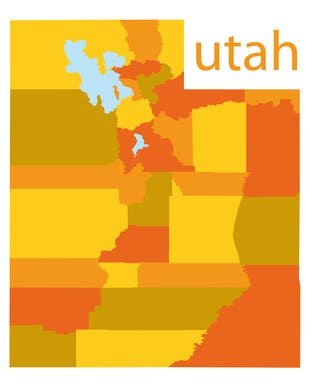I love the four-day work week.
My wife works one for most of the year and it, in combination with my ability to work anywhere with a reasonable Internet connection, has allowed us to spend some nice Fridays outside of the solitude of my house.
So when I heard that the state of Utah was discontinuing their four-day work week for employees, I was a little disappointed. After all, it was always nice to point to an entire state government that was making it work for them. It gave the doubters of its benefits a little less ammunition.
What went wrong in the Beehive State?
Not enough cost savings
According to Salt Lake City’s Deseret News, there were two reasons that the four-day work week was discontinued:
The four-day work week was ordered by former Gov. Jon Huntsman Jr. as a way to save an estimated $3 million annually in energy costs, but the actual savings fell far short.
And while both employees and the public generally liked the four-day week, lawmakers said the new schedule was needed because some companies and local governments were frustrated they couldn’t do business with the state on Fridays.”
What I think it ultimately comes down to is the cost savings portion that the four-day work week failed to produce. If the cost saving results were strong enough, my guess is that the concerns of local governments and companies about being dark on Fridays would be disregarded.
Of course, cost savings isn’t the only benefit of a four-day work week.
Retention as a main benefit
To me, the main benefit is employee satisfaction, and ultimately, better retention. Now you can get a full five days of coverage in a 4-10 work schedule (some people have a Monday-Thursday schedule, other people have a Tuesday-Friday schedule). The obvious downside is that there is no direct cost savings from being able to shut down an office one day week.
That always seemed like part of the shell game you try in order to get the measure approved. You probably could get the same energy savings from replacing light bulbs, more efficient use of HVAC systems, or easy to implement policies like shutting off your computer over the weekend.
But the retention benefit is well grounded, though. If you’ve seen this Powerpoint presentation from Netflix, you know that their strategy is to make it as painful as possible to leave the company. That means they do top tier pay grades for their employees so that, no matter where the person goes to, they will have to deal with less money.
Now money isn’t everything, but once you’ve been acclimated to making a certain amount, it is difficult to adjust down. And Netflix knows that.
The four-day work week has the same effect. When you start planning your life around having a three-day weekend every week (that’s 52 less working days per year than most everyone else), it is hard to go back to working five days a week. That, combined with all of the other benefits of working for the state, made changing jobs difficult.
Focus on hard ROI to blame
Of course, few have the guts to stand up for that argument. Our obsession with metrics and hard (and specific) ROI for any workplace initiative makes it feel like we are pulling numbers out of thin air when we talk about the cost savings that lower retention brings. It’s a lot easier to look at the power bill and say the program isn’t working than to look at who you are retaining — and what each additional year of service brings to the state as far as value.
That cowardice means good programs like the one in Utah get erased while the invisible costs associated with staff turnover, lost productivity and expertise are again swept under the rug in favor of more concrete measurements.
It’s an easy route to take. Explaining to an impatient populace the nuances of workplace culture and importance of retention is an unenviable position for most politicians. In this case though, it would have been the right thing to do.
